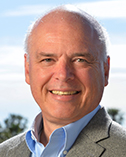
David A.B. Miller
Stanford University
|
Primary Section: 31, Engineering Sciences Secondary Section: 33, Applied Physical Sciences Membership Type:
Member
(elected 2008)
|
Biosketch
David Miller (B. Sc., St. Andrews, Ph.D., Heriot-Watt) is the W. M. Keck Professor of Electrical Engineering, and Professor by Courtesy of Applied Physics at Stanford University. Before Stanford, he was with Bell Laboratories from 1981 to 1996, as a department head from 1987. He has published over 280 scientific papers, holds over 75 patents, has a Google h-index of over 100, is the author of the textbook Quantum Mechanics for Scientists and Engineers (Cambridge, 2008), and has taught open online quantum mechanics classes to over 50,000 students. He was President of the IEEE LEOS (now Photonics Society) in 1995, and has served on Boards for various societies, companies, and university and government bodies. He was awarded the OSA Adolph Lomb Medal and the R. W. Wood Prize, the ICO International Prize in Optics, the IEEE Third Millennium Medal, and the 2013 Carnegie Millennium Professorship. He is also a Fellow of APS, OSA, IEEE, the Electromagnetics Academy, the Royal Society of London and the Royal Society of Edinburgh, holds two Honorary Doctorates, and is a Member of the US National Academies of Sciences and of Engineering.
Research Interests
David Miller's research interests include: fundamentals of optics in communicating, processing and sensing information; programmable and self-configuring optics; nanophotonics; and optoelectronic physics and applications of quantum-confined structures, such as semiconductor quantum wells. One major recent research topic is the design, control, and configuration of complex integrated optics enabled by micro- and nano-fabrication, including algorithms and architectures of programmable and self-configuring integrated optical networks for applications in information processing, communications and sensing. He has also developed a new modal view of optical systems that has led to fundamental physical laws and gives limits and design approaches for complex optical systems generally.

